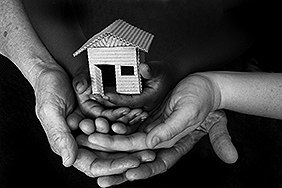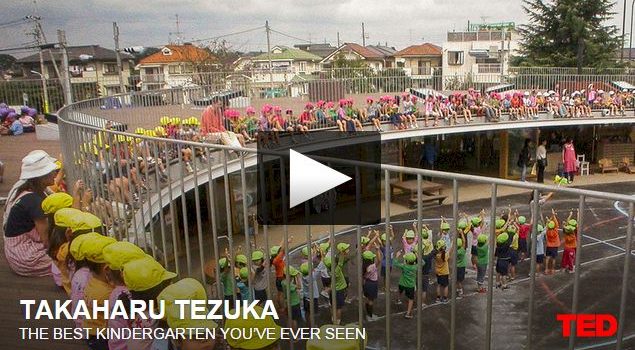Ruby Takanishi, who presided over the Foundation for Child Development for many years, sends me small gifts. In a recent email with the subject line “Favorites,” I clicked on the link to a TED talk by Takaharu Tezuka about a kindergarten that he and his wife and partner, Yui, renovated in 2007 in Fuji, a suburb of Tokyo.
They are architect/poets, working toward unity with nature and the elements. House to Catch the Mountain is one of their creations. They also understand what children need.
“Kids love to make circles,” he tells us—the inspiration for a school in the round. Children run miles in joyous abandon during the day. The school is completely open to the elements for most of the year.
“There are no boundaries between the inside and outside,” Tezuka says. Trees pop up through the wood decks and in the classrooms. Children feel them, occasionally taste them, and climb them. No one’s nervous, or anxious, he insists. Too busy running, jumping, exploring—and making noise. “You’re not supposed to be silent,” Tezuka says of five-year-olds. “Noise is important, and children show amazing concentration in class.”
“Architects who put people first,” is how the couple was described in a New York Times article in 2007, as a crisis in the American kindergarten was erupting, play vanishing from the nation’s classrooms. The Tezukas and Sekiichi Kato, head of the school, which abuts an organic vegetable garden, consulted the children in the design for the new building, measuring the spokes on the roof railings to ensure that the kids could stick out their legs and dangle them in the air.
Tezuka thinks a “a small dosage of danger” is good for kids—a controversial idea in the U.S., where those with resources over-protect, and those without struggle to steer their children from the toxic effects of poverty, violence, and overall social neglect. He laments this loss. How can they learn to collaborate, to help each other?
“He’s strong, he’s resilient, and he’s trying to see if it’s safe to jump off,” the architect says of his son, a student in the kindergarten. We shouldn’t control them, or protect them too much, he advises. They need to fall so that they can learn to live in the world. Agreed. But how far they fall is of great signficance. Wouldn’t it be lovely if all our children could have a place for the bit of danger that helps them fly?

